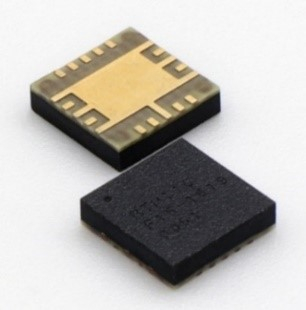Teledyne Scientific & Imaging Announces 50GHz Track & Hold Amplifiers for Wideband Signal Acquisition and Processing
Teledyne Technologies (NYSE: TDY) is expanding its high-speed mixed-signal integrated circuits with two new Track & Hold Amplifiers featuring a 50 GHz input bandwidth. The RTH110 amplifier supports clock frequencies from 100 MS/s to 1 GS/s, while the RTH130 reaches up to 14 GS/s. Both amplifiers promise low total harmonic distortion and efficient power dissipation, enhancing signal acquisition and processing capabilities for broadband applications. The products are offered in a compact 4x4mm QFN package.
- Introduction of RTH110 and RTH130 amplifiers expands product line.
- 50 GHz input bandwidth enhances capability for wideband signal acquisition.
- Low total harmonic distortion improves signal quality.
- Compact 4x4mm QFN package offers design flexibility.
- None.

(Photo: Business Wire)
- RTH110 – Track & Hold IC, 50 GHz Input BW, Clock Frequency from 100 MS/s to 1 GS/s
- RTH130 – Track & Hold IC, 50 GHz Input BW, Clock Frequency from 800 MS/s to 14 GS/s
RTH110 – A three-stage Track-and-Hold Amplifier (THA) with an input bandwidth from DC to 50 GHz and a sampling rate from 100 MS/s to 1 GS/s. Total harmonic distortion (THD) is better than -40 dB at 30 GHz and -35 dB at 50 GHz, output signal is 1Vpp differential, and power dissipation ≤1.9 Watts. The RTH110 is ideally suited for broadband test-and-measurement applications to capture waveforms with less than 10 ps rise times.
RTH130 – A two-stage THA with an input bandwidth from DC to 50 GHz and a sampling rate from 800 MS/s to 14 GS/s. THD is better than -35 dB at 50GHz, output signal is 1Vpp differential, and power dissipation ≤1.5 Watts. The RTH130 eliminates the need for local oscillators and mixers in wideband systems making for compact cost-effective RF-to-digital receivers.
Both the RTH110 and RTH130 are available in 4x4mm quad flat no-lead (QFN) package. Die option and evaluation boards also available.
About
About
Teledyne Imaging is a group of leading-edge technology companies aligned within the Teledyne brand. With unrivalled expertise across the electromagnetic spectrum and decades of experience, the group offers world-leading capabilities in sensing, signal generation and processing. The collective delivers innovative solutions to aerospace, defense, geospatial, machine and industrial vision, medical and life sciences, semiconductors and MEMs. For more information, visit www.teledyneimaging.com.
View source version on businesswire.com: https://www.businesswire.com/news/home/20220823005340/en/
(805) 373-4686
TSI.Electronics@Teledyne.com
Source:
FAQ
What is the significance of the new Track & Hold Amplifiers by Teledyne (TDY)?
What are the clock frequency ranges for the RTH110 and RTH130 amplifiers?
How do the new amplifiers impact signal acquisition performance?







